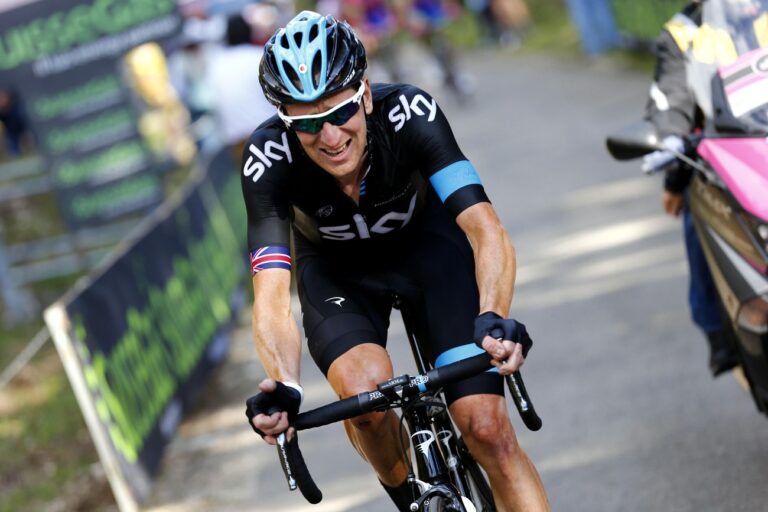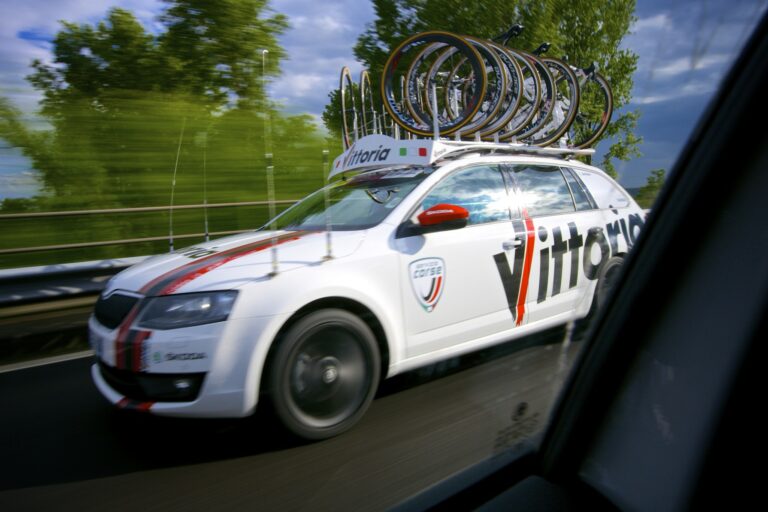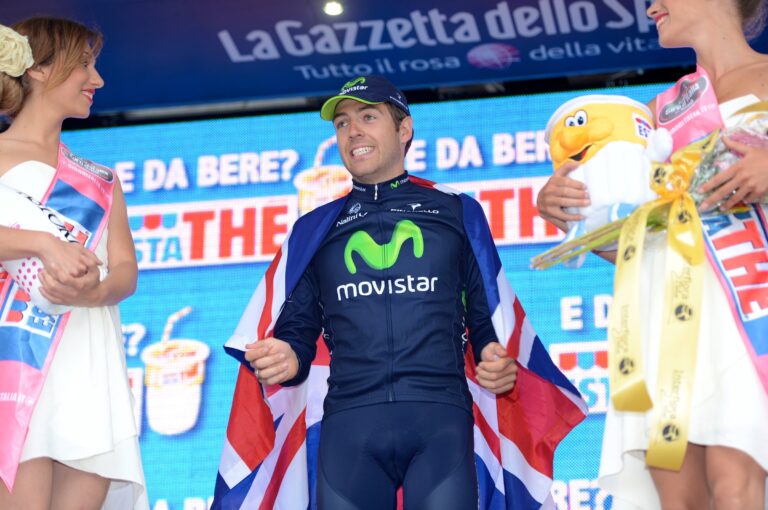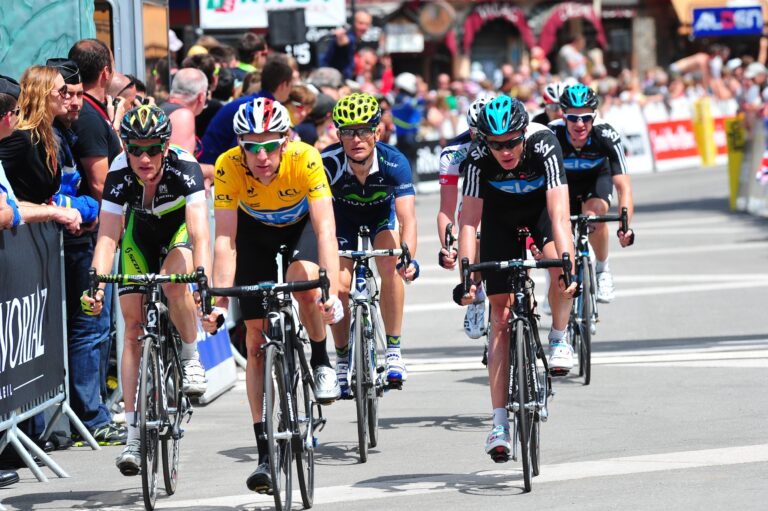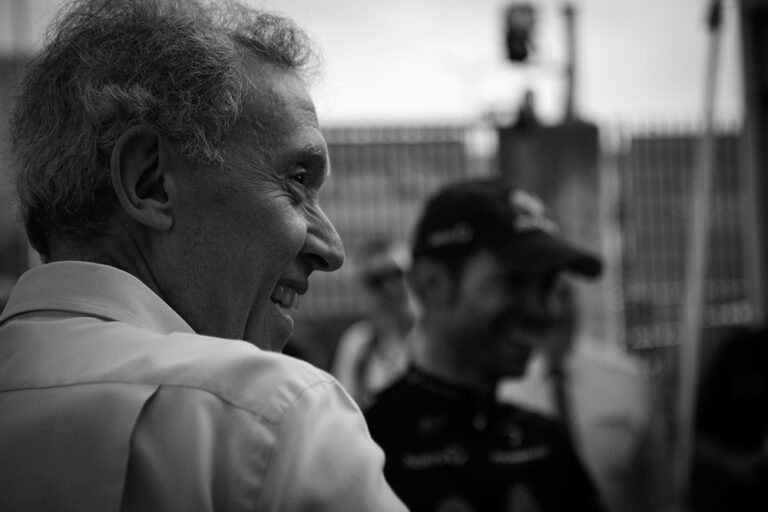Today’s opening stage of the Giro d’Italia will be a day for the sprinters.
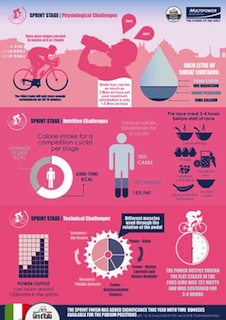
In a break with recent tradition, the race will start on open roads for the first time since 2003. Time trials have been the order of the day since Alessandro Pettachi won a bunch kick into Leece ten years ago.
Mark Cavendish, winner of 10 Giro stages and twice a holder of the pink jersey will attempt to build on his tally today: Mario Cipollini’s record 42 victories could elude the 28-year-old Manxman, but Pettachi’s 22 stage tally comes increasingly within reach.
The demands on the fast men of the peloton are every bit as severe as those placed upon the climbers, as shown in this infographic from the Giro’s sports nutrition partner, Multipower Sportsfood.
As the sprint trains hit the front of the peloton in the final 30km of a stage, the physical demands on the men driving them go into overdrive. They simply don’t have time to eat, so expect to see them gobble a gel to stave off fatigue.
Carbohydrate intake is crucial for cyclists. Four hours before the riders roll out at Naples today, they will have consumed a breakfast likely to consist of two bowls of porridge, two to three eggs, a litre of diluted juice, a handful of nuts and seeds, a banana, and a bowl of museli.
With the body only able to store sufficient carbs for between 50 and 70 minutes of effort at race pace, the breakfast is only a start. The riders will need to refuel throughout the stage to have any chance of performing at the denouement.
Food is only half the story. Hydration will present another significant challenge. Race efforts can see the body lose fluid at a rate of up to two litres an hour; the body’s limites fluid replenishment, however, typically is limited to a rate of 1.5 litres an hour.
Today’s flat stage is one for the likes of Mark Cavendish, sprinter able to generate enormous power outputs, wiith peaks well in excess of 1,000 watts. Different muscle groups are called upon at different stages of the pedal stroke. The down stroke activates the glutes, thigh and calf muscles, while the upstroke calls on the tibialis anterior at the front of the calf, and the hip flexors.

Cavendish and his rivals will be straining every muscle to cross the line first in Naples today. The former world road race champion got off to a great start last year by winning stage two, the first road stage, but things went awry dramatically on stage three when he was brought down by Roberto Ferrari. The outcome would have been especially disappointing for Cavendish, who had sent Team Sky staff to film the route of the finale at Montecatini Terme to help his lead out train prepare.
With the stage finished, and victory (hopefully) wrapped for Cavendish, the riders will begin the business of recovery by gulping down drinks prepared by the soigneurs during the stage, giving them a head start of the so-called “golden hour” – a 60-minute window post-exercise during which the body is most receptive to minerals and nutrients.



